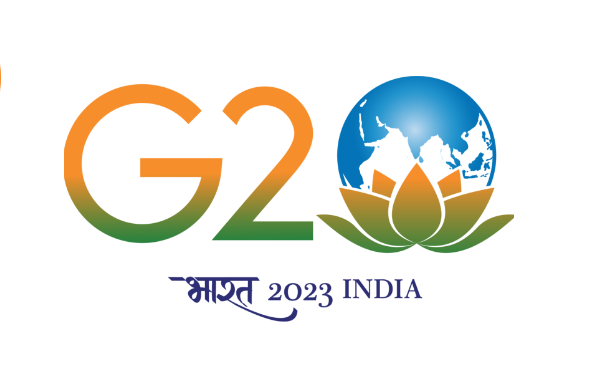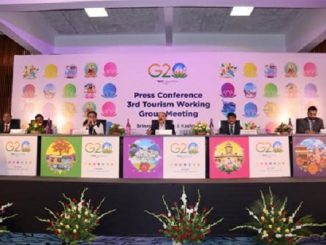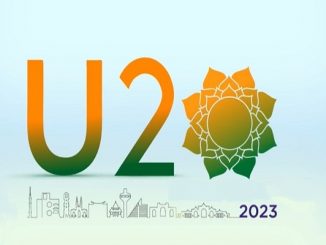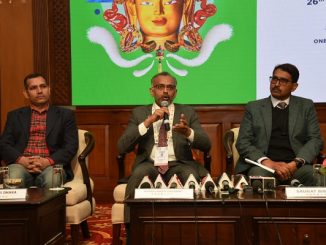
Apr 20: The Culture Working Group (CWG) under India’s G20 Presidency in association with UNESCO as the Knowledge Partner organised a Global Thematic Webinar on the “Promotion of Cultural and Creative Industries and Creative Economy”. This webinar was the third in a series of four that focus on the priority areas as articulated by the CWG. The aim of the webinar was to foster an inclusive dialogue and facilitate an in-depth discussion from an expert-driven perspective.
The webinar was held from 12.30 pm to 8:30 pm (IST) on 19th April. It witnessed fruitful discussions and sharing of best practices on the promotion of cultural and creative industries and creative economy, bringing together 43 experts from 28 countries including G20 members and guest nations, as well as 13 international organisations and relevant institutions.
In today’s globalised world, the vital role of cultural and creative industries and the creative economy in an international economic context cannot be overstated. These industries have become drivers of growth, as seen in the global exports of creative goods and services, which reached US$524 million and US$1.1 trillion, respectively, in 2020, according to the Creative Economy Outlook 2022 by the United Nations Conference on Trade and Development. This trend is expected to continue in the coming years. The engagement of the youth in cultural and creative industries is noteworthy as the sector employs the largest number of people in the age group of 15-29. In the context of South-South trade, the cultural and creative industries are increasingly important as a source of continued economic growth and development. In the last two decades, South-South trade in creative goods has doubled, comprising 40.5% of creative exports of developing economies in 2020. Additionally, since 2011, developing economies have exported more creative goods than developed economies.
Although the creative industry holds a great deal of importance, its persistent informal structure presents a significant obstacle to achieving sustainable growth. Currently, the informal economy accounts for an estimated 60% of the global creative industry, impacting the status of cultural practitioners and having far-reaching consequences for the broader economy. The contributions of this sector are undervalued, making it essential to establish a cohesive network to address these challenges. To do so, it is crucial to promote international collaboration, enabling critical deliberation on necessary measures towards formalisation.
Govind Mohan, Secretary, Ministry of Culture and Chair, CWG in his opening remarks at the webinar emphasised “fostering a vibrant and inclusive cultural ecosystem that values and supports creativity can have positive impacts on individuals, communities, and society. The cultural and creative sector is also a catalyst for change, empowering individuals, and communities, and promoting freedom of expression and cross-cultural dialogue. It is, therefore, essential to support this sector and establish an environment where creativity and innovation can thrive.”
The webinar had three speaking segments and the interventions by experts were distributed across these segments based on their respective time zones. The webinar was moderated successively by representatives of ILO, UNCTAD, and WIPO with expertise on the topic. It was live-streamed on the YouTube channel of UNESCO.
At the webinar, representatives from the G20, guest nations, and international organisations shared data demonstrating the substantial contribution of the creative economy to their respective national GDPs. Certain interventions emphasised that the creative economy also serves as the basis for a unified, human-centred society that upholds cultural diversity as a fundamental principle. The discussion specifically highlighted the transformative changes brought about by the digital revolution, and more recently, by the effects of the COVID-19 pandemic, especially in relation to emerging business models and cutting-edge technologies.
Several countries indicated that the cultural and creative industries have increasingly become a core priority, as evidenced by the establishment of dedicated ministries in some cases. A number of countries have implemented policies aimed at improving the status of cultural practitioners, promoting fairness in compensation, and enhancing inclusivity and equity in the cultural sector. In addition, these countries are investing in formal education, professionalisation, and talent development to create more jobs in the cultural sector and are working to improve data collection in the creative sector, including through culture satellite accounts.
A set of recommendations were made regarding the methodologies used to classify the creative sector. Some of these emphasised the need to establish a clear and unified definition of the scope of the creative economy, drawing on internationally agreed definitions and examples from specific national cultural policies. Other recommendations called for a focus on measuring the creative sector’s contribution to GDP and its impact on sustainable development in G20 countries, in collaboration with specialised international organisations, building upon their existing statistical and methodological frameworks.
A consolidated report of the four global thematic webinars will be produced and shared with G20 members, guest nations and international organisations at the third CWG meeting due in Hampi, Karnataka from 15 July to 18 July 2023. The aim of this report is to serve as a legacy of the joint work, deliberations and discussions of the CWG process, with a view to ensuring knowledge building over time. The global thematic webinar on priority four, Leveraging Digital Technologies for the Protection and Promotion of Culture, is scheduled for 20 April 2023.
Disclaimer: We donot claim that the images used as part of the news published are always owned by us. From time to time, we use images sourced as part of news or any related images or representations. Kindly take a look at our image usage policy on how we select the image that are used as part of the news.


